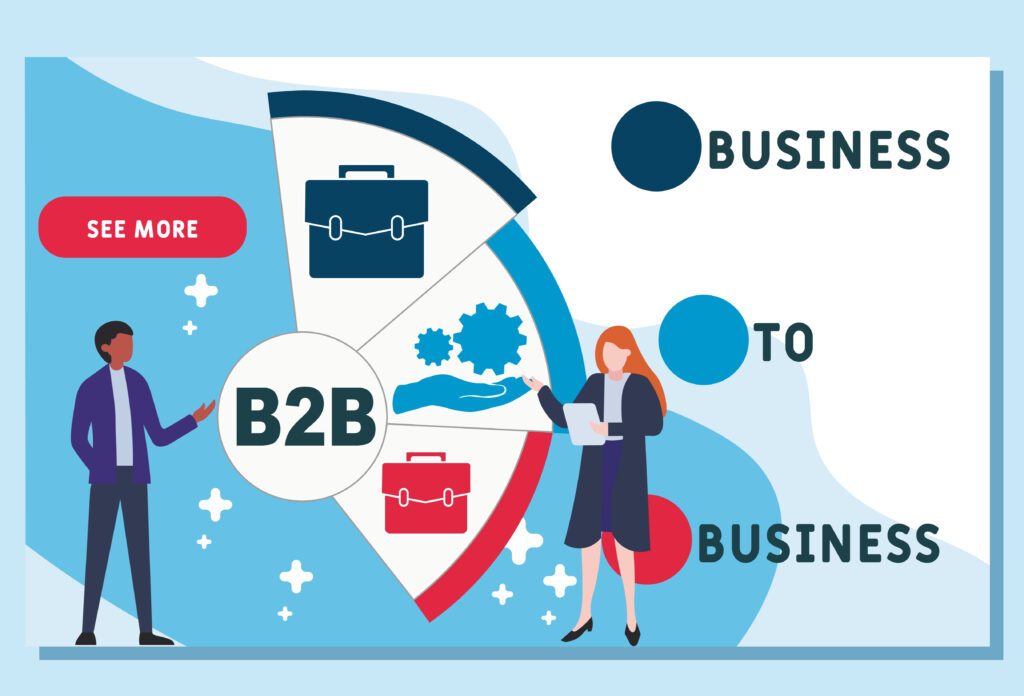Is your business selling products online, or are you considering it? If this is true, then consider taking an e-commerce course. Cortney Fletcher's eCom babes cost is very affordable and will teach you how to reap profit as fast as possible when you start your online business. And before you begin any other type of advertising, ensure that your website is designed to convert.
As a result, depending on your audience's demographics, the technique you choose to increase conversions may vary dramatically. There are several B2B e-commerce websites to pick from. Is your firm B2C (B2C) or B2B (B2B)?
The following details below share critical contrasts between B2B and B2C e-commerce websites, all arising from their respective business models. A custom e-commerce website created just for your business will certainly improve sales.

B2B (Business to Business) eCommerce is available here for anyone seeking it. When people acquire these products from a store, they employ a B2C strategy.
Things aren't always as simple as they appear. D2C (direct-to-consumer): A small business may decide to offer items directly to customers, regardless of where they originate. They are made by one person and sold instantly to customers in their own houses. Additionally, a well-known merchant, such as a furniture company, may sell in quantity with corporations, such as by shipping hundreds of office chairs to major enterprises regularly. This is a B2B (Business to Business) model.
Further, many firms use B2B and B2C models, but not all. B2B2B models use a supply chain that travels through several different providers before reaching its final destination.
Is it becoming clearer? Be not afraid; it is not quite as complicated as it appears. Now it's time to demonstrate how each model works. The first stage in designing and developing a great website and marketing it to your target audience is to comprehend your business's concept (s).
As online sales expand, businesses must focus on improving internal processes and boosting consumer comfort, accessibility, and ease of use. As technology advances, it will become increasingly crucial in B2B partnerships. e-commerce is predicted to witness the following developments during the next five to 10 years.
Omnichannel
We expect a consistent experience regardless of whether we use a mobile app, a mobile website, or visit a business in person. Buyers expect omnichannel experiences across their lengthy shopping journeys in B2B.
Amazon established retailers, and direct-to-consumer startups compete for wallet share. Over 77% of buyers use their smartphones to compare prices in stores, and they believe that smartphones enhance their shopping experience. Clients, particularly B2B customers, are increasingly interested in novel purchasing techniques.
Personalization
Personalization is an integral aspect of the customer experience for both consumers and organizations. On the other hand, B2B buyers have far higher criteria. They have a more significant number of stakeholders, longer sales cycles, and more sophisticated customization, which is unlikely to change very soon.
Numerous clients like personalized communications, and many B2B buyers are ready to pay a premium for them. Everything is subject to change, from the goods and prices to the promotions and checkout processes.
Data mining for analysis
Soon, data and analytics will be used to power loyalty programs and payments. As customer requirements develop, demographic, geographic, and consumer situational data will continue to be employed in marketing decisions.
While cloud computing and storage are desirable additions, network optimization and predictive analytics are increasingly important. Industry leaders and management must modify their processes and capabilities to keep pace with the fast adoption of new technologies.
Mobile first
Mobile web traffic doubles every five years, and B2B is not immune to this trend. As millennials climb the corporate ladder, future B2B clients are expected to utilize mobile devices more often, increasing mobile sales. Additionally, B2B vendors will be looking for leads and prospects.
Although mobile devices are used by more than six in ten e-commerce visitors, they account for less than half of all e-commerce purchases. Due to the enormous mobile user base, which does not purchase as frequently as it should, high-value B2B e-commerce marketplaces may survive and thrive.
Alibaba is an e-commerce platform that sells products to online merchants (B2B), who then sell them to consumers (B2C) (B2C). While many e-commerce firms lack branding and rely on drop-shipping (which is not an accurate B2B2C model), some do. The e-commerce company can customize white-branded things such as stainless steel water bottles.. The model is B2B-to-consumer.
Slight distinctions between B2B and B2C e-commerce websites can significantly impact the following:
Product supporting content (PSC) is used in B2B (B2B) marketing
Recently, B2B sales have shifted toward allowing buyers to research. Because a professional buyer would undertake the majority of their research independently, it is critical to incorporate all relevant tools and information from the start.
B2B websites exhibit a range of traits, including the following:
In the B2C sector, supporting content for a product is crucial
B2C clients buy for themselves rather than for the benefit of others. As a result, while making an online purchase, customers aren't presented with as many challenging options. The aroma, pricing, and compatibility of a "holiday candle" on Amazon are the most important factors to consider while looking for one.
Here are some examples of B2C websites:
To establish a successful business, it's critical to grasp the difference between B2B (B2B) and B2C (B2C) websites. Get started today.